The Legend of Zelda is the longest-running action-adventure series, with 19 canon games and counting. Additionally, there’re three remakes, so the grand total is 22 Zelda games.
Aside from the canon games, there are about ten extra non-canon games, ports, remakes, and more. There’re also other media covering the franchise, such as manga, comics, novels, cartoons, guidebooks, encyclopedias, and more.
We’re diving into the most important action-adventure series. Breath of the Wild alone is the pinnacle of Nintendo IPs.
All The Legend of Zelda Games in Order
The Nintendo-exclusive series has 17 canon titles across multiple Nintendo consoles. Some of these are only available for handheld devices, though.
The series follows Link, the soul of a legendary hero. He completes the tasks of saving Princess Zelda and saving Hyrule from Ganon. Each Link reincarnation is different from the other. However, the story spans thousands of years of Hyrule story and three alternate timelines.
Either way, these games combine puzzle-solving, platforming, exploration, dungeon-crawling, and action-adventure combat. Additionally, most Zelda games feature a unique mechanic, like time-traveling, shape-shifting, or dimensional travel.
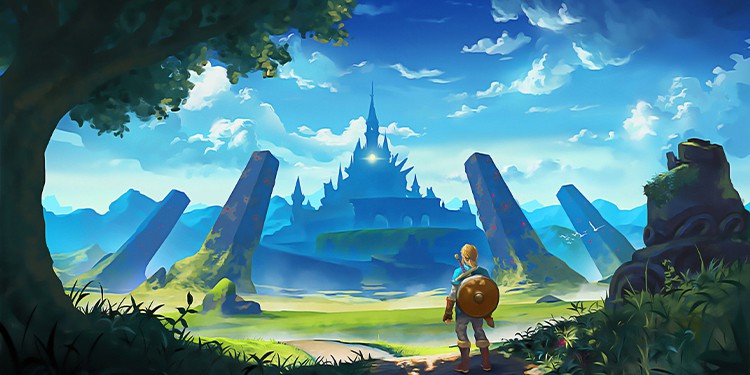
The Legend of Zelda – 1986 (Consoles & Handheld)

The Legend of Zelda debuted in 1986 for the Famicom Disk System, a Nintendo home console. It later reached the NES, GameCube, Game Boy Advance, Wii Virtual Console, 3DS Virtual Console, Wii U Virtual Console, and the Switch Online NES Library.
The original game introduces Hyrule, the fantasy land, as well as Link, a young hero. The plot involves Link collecting eight fragments of the Triforce of Wisdom, which he needs to rescue Princess Zelda from Ganon.
A top-down perspective follows the classic game throughout dungeons and open areas. Link slowly collects weapons and tools to unlock puzzles and defeat enemies. The game also delivers few instructions, thus granting the player greater freedom.
Zelda II: The Adventure of Link – 1987 (Consoles & Handheld)
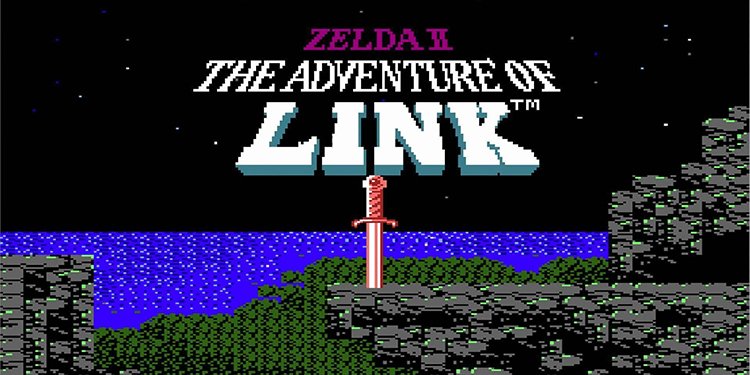
The Adventure of Link debuted for the FAMINOM in 1987 before reaching the NES in 1988. Later on, it premiered for GameCube, Game Boy Advance, Wii Virtual Console. 3DS Virtual Console, Wii U Virtual Console, and the Switch Online NES Library.
The second entry involves the same Link reincarnation, rescuing Princess Zelda from a sleeping spell. It’s a direct sequel to the first game.
Gameplay focuses on side-scrolling sections, role-playing elements, and puzzles. RPG elements included experience points and a leveling system, unique in the series canon. Added features include a “magic meter” and the Dark Link character.
The Legend of Zelda: A Link to the Past – 1991 (Consoles & Handheld)
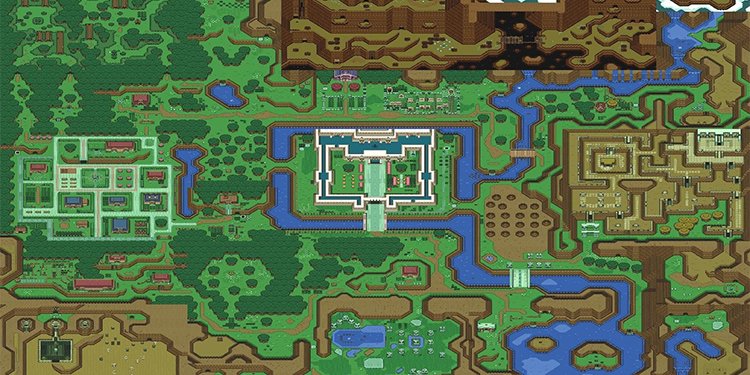
The third entry debuted for SNES in 1991. Later on, it reached the Game Boy Advance, Wii Virtual Console, Wii U Virtual Console, Nintendo 3DS Virtual Console, and the Switch Online SNES Library.
The game introduced a vast array of characteristics still present in modern Zelda games. These include multi-level dungeons, dynamic settings with light & shadows, Master Sword, the Grappling Hook, and a semi-open world design.
A Link to the Past is a prequel to Legend of Zelda. It features a younger Link and creates the “Hero is Defeated” timeline.
Princess Zelda awakens Link with a telepathic message to save her from a Hyrule Castle dungeon. The hero must find a way to save the princess and stop Agahnim, an evil wizard, from releasing Ganon from its prison.
The Legend of Zelda – Link’s Awakening – 1993(Handheld)
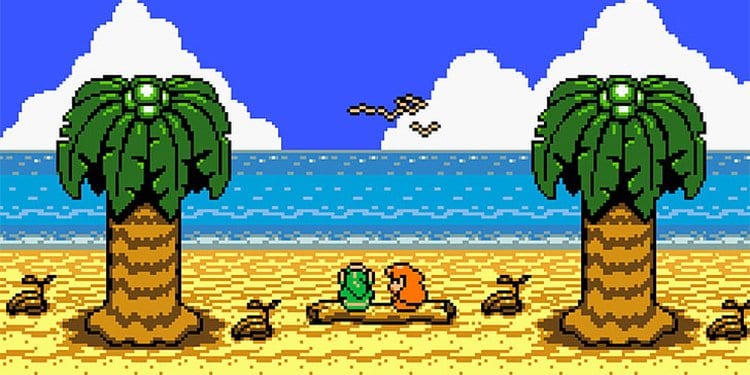
Link’s Awakening debuted in 1993 for the Game Boy. Years later, Link’s Awakening DX debuted in 1998 for Game Boy Color. It’s currently available on the 3DS Virtual console.
The fourth entry goes after a Link to the Past in the “Hero is Defeated” timeline. However, it doesn’t occur in Hyrule, and it doesn’t feature Princess Zelda or the Triforce relic. Also, it’s the only Zelda game that features Yoshi.
Instead, Link is lost on the Koholint Island, guarded by the Wind Fish, a whale-like God. The player must fight monsters, solve a vast array of puzzles and explore the world to find a way out.
The Legend of Zelda: Ocarina of Time – 1998 (Consoles)
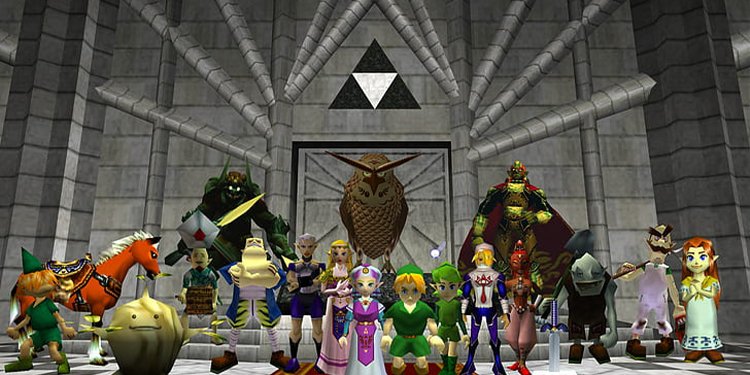
Ocarina of Time is one of the most beloved games in the series. The title debuted worldwide in 1998 for Nintendo 64. Years later, it premiered for GameCube, Wii Virtual Console, and the Switch Online N64 Library.
Being the first title for the 64 consoles, it was the first Zelda title with 3D graphics. That significantly changed the game for the better and forever. Combat, exploration, and puzzle-solving became 3D as well. Therefore, the game became deeper and more complex.
A new Link, on the “main timeline,” is on a quest to stop evil King Ganondorf. He must travel through time, navigate dungeons, and explore the “Overworld.” The latter is the area outside of Hyrule.
Then, the 3D movement turned the game into a third-person action-adventure title. Link now fights with swords, shields, bows, bombs, and magic spells. There’s also a targeting system that allows him to shoot projectiles.
The map is bigger than ever as well. Ocarina of Time has several optional side-quests, some of which unlock new weapons and items. By the beginning of the game, Link opens an ocarina. It later becomes the Ocarina of Time, the game’s critical item. Link must learn twelve melodies that allow him to solve puzzles, teleport, and claim the Master Sword.
Taking the Master Sword takes Link seven years into the future as an adult. Adult Link and Young Link have different abilities. There comes a time when players can travel between the two time periods to use the other skills.
The Legend of Zelda: Majora’s Mask – 2000 (Consoles)

Majora’s Mask debuted for Nintendo 64 in the year 2000. Then, it premiered for GameCube, Wii Virtual Console, and the Wii U Virtual Console.
Majora’s Mask is a direct sequel to Ocarina of Time. The story happens two months after the previous game. It follows Link on a quest to Termina, a parallel world. There, he must prevent the Moon from falling and destroying the world in a three-day cycle.
Inevitably, the game introduced two critical concepts. First, the three-day cycle repeats itself until Link accomplishes his goal. The second is multiple masks that transform Link into different beings with different skills.
Link also has the Ocarina, and he can control time, open passages, solve puzzles, and travel back to the first day of the cycle. However, he must learn the melodies first.
The Legend of Zelda : Oracle of Seasons & Oracale of Ages – 2001 (Handheld)
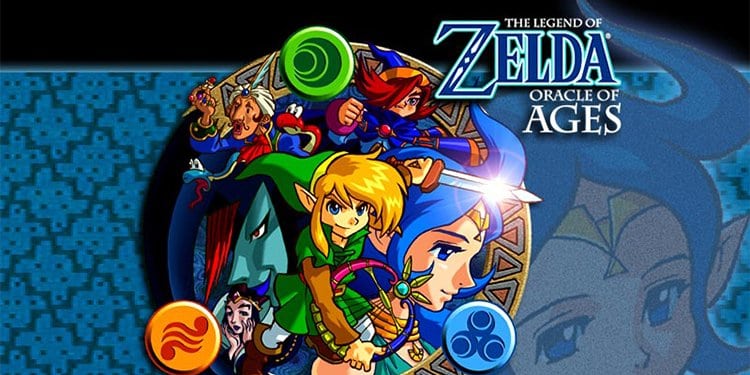
Oracle of Seasons & Oracle of Ages count as two games in a single bundle. Capcom subsidiary created the titles, and the bundle debuted in 2001 for the Game Boy Color. Then, it reached the Nintendo 3DS Virtual Console.
These games take place in the “Hero is Defeated” timeline. The plot happens after Link’s Awakening when the Triforce transports Link to Holodrum. There, he sees tyrant beast Onox kidnap the Oracle of Seasons, Din. The game’s goal is saving Din.
In the next game, Oracle of Ages, the Triforce transports Link to another area, Labrynna. There, he sees sorceress Veran possess goddess Nayru. Similarly, Link must save Nayru to complete the game.
Gameplay is similar to before. Link has a sword, a shield, secondary weapons, and tools. He uses these abilities to defeat enemies, and explore the world. He also has the Rod of Seasons and the Harp of Ages as main items. The first controls seasons in Holodrum; the latter lets Link travel in time in Labrynna.
The Legend of Zelda: A Link to the Past & Four Swords – 2002 (Handheld)
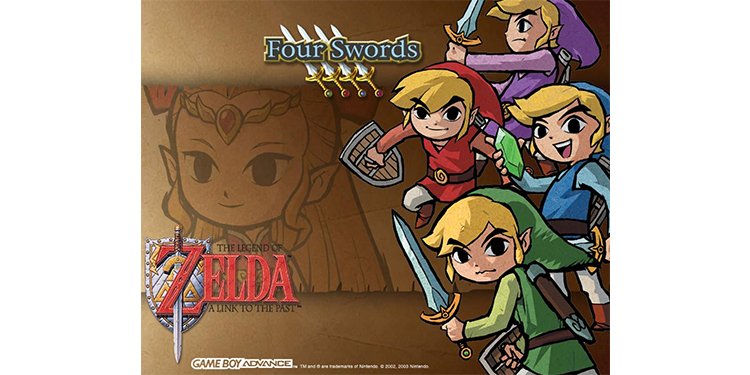
A Link to the Past & Four Swords is a co-production by Nintendo and Capcom. The title debuted for Game Boy Advance in 2002. In 2011, it debuted for the DSiWare Nintendo service with extra content.
The game accounts for two separate entities. Both work as multi-layered dungeon exploration with sword, shield, abilities, and magic.
A Link to the Past is about wizard Agrahmin releasing Ganon from prison, so Link must defeat both antagonists. The next game is Four Swords, which takes place after Ocarina of Time. It’s about beating Vaati, a secondary antagonist Link can trap within the Four Sword.
Gameplay changes very little from the 1991 A Link to the Past. It’s an overhead adventure where Link has to combat with sword and shield. Four Swords is the multiplayer element of the cartridge. Players can only complete the title with four or two players cooperating through a series of puzzles and multi-layered dungeons.
The Legend of Zelda: The Wind Waker – 2002 (Console & Handheld)
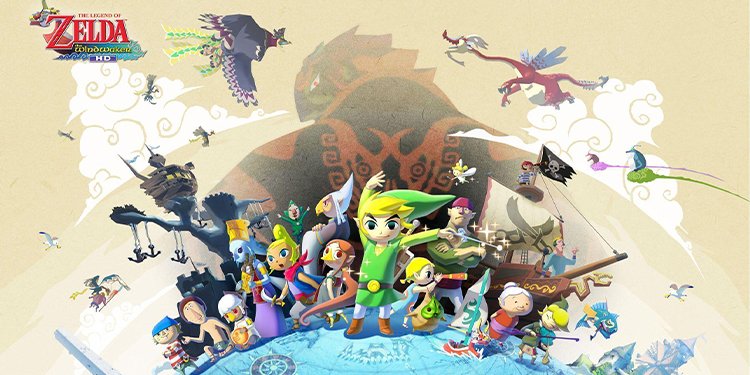
Wind Waker debuted in 2002 for GameCube. There’s also a 1080P remaster for the Wii U, available since 2013.
The game happens in the vast sea, on a group of islands. Link is trying to save her system from Ganondorf and finds himself in a conflict for the Triforce. The Triforce is a sacred relic that grants wishes.
Wind Waker changed the graphic style to a more cartoony style, lighter in tone, and flimsier. Gameplay-wise, it was similar to previous console Zelda titles. However, the game added a boat sailing mechanic that allows Link to travel across islands.
Also, the unique mechanic is the Wind Waker. This is a baton that controls the wind by tuning specific melodies. Controlling the wind is necessary to sail, explore, and solve puzzles.
The Legend of Zelda: Four Swords Adventure – 2004 (Console)
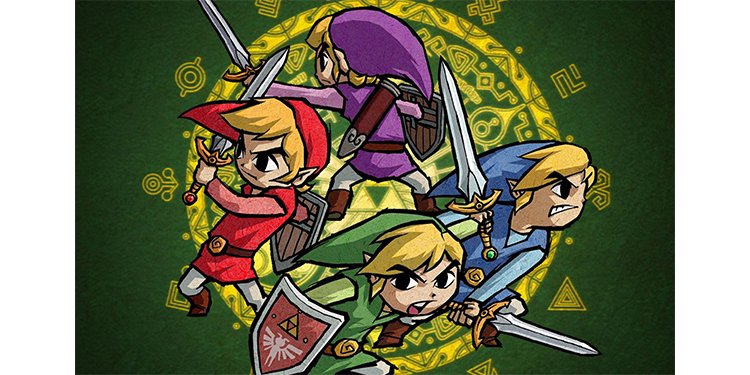
Four Swords Adventures debuted for GameCube in 2004. As a unique feature, the game allows using the Game Boy Advance as a controller through the Game Boy Advance link cable.
The plot happens centuries after Majora’s mask, as the final story in the “Child Timeline.” Ganondorf’s new incarnation (The Dark Beast Ganon) and the hero must defeat him. Particularly, Ocarina of Time showed the backstory for this alternate villain.
The gameplay has various game modes. The main mode is “Hyrulean Adventure,” a co-op multiplayer featuring the classic Zelda gameplay. It’s the main campaign, and it supports one to four players. The story has eight worlds, three stages, and a boss battle.
Another mode is “Shadow Battle,” a competitive multiplayer mode. Lastly, there’s “Navi Tracker,” a rally race present only in the Japanese version.
The Legend of Zelda: The Minish Cap – 2004 (Handheld)

The Minish Cap is another Captom and Nintendo co-op, although Flagship was also part of development. The game debuted in 2004 for Game Boy Advance. It’s also available for the Wii U Virtual Console and the 3DS Virtual Console.
Story-wise, the plot revolves around the legend of the Four Sword. As such, it takes place in the original timeline, before Four Swords. The story deals with the origins of the Four Swords and Vaati.
The unique mechanic is the Ezlo cap, an item that shrinks Link to the size of a Minish, a Hyrule bug-raze. It’s an essential tool to complete the game’s puzzles and multi-level dungeons. Also, the game offers an open-world map. However, Link has to unlock abilities to go to certain areas.
The Legend of Zelda: Twilight Princess – 2006 (Console & Handheld)
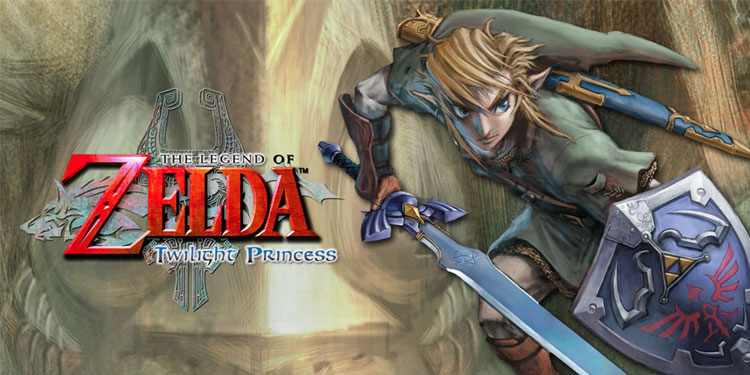
Twilight Princess debuted in 2006 for GameCube and Wii. There’s also a 2016 high-def remaster for the Wii U.
As the first Zelda for the Wii, it also brought significant gameplay changes. In essence, players could control Link through the console’s motion controller. So, for example, you could aim the bow or the grappling hook via the motion sensors.
The story happens after Majora’s Mask and before The Four Swords Adventures (Child Era). Link tries to save Hyrule from a parallel dimension corrupting the land (The Twilight Realm).
Similarly, the game features a vast open-world and a horse to travel around the land. There’re also nine dungeons (temples), multiple boss fights, multiple tools, and several combat abilities to unlock.
The unique mechanic is about Twilight Realm. Link can enter the void and transform into a wolf. As a wolf, he can bite to attack, dodge, move faster, dig holes to create passages, and find clues and tracks with his senses. Moreover, the Wolf can hear tortured souls and fight against ghosts.
Another unique ability refers to Midna, a small imp Link carries on his back. Midna can use energy fields to attack, help Link jump long distances, and warp the player to Overworld locations.
Lastly, the game greatly improved graphics, performance, and AI. Putting everything together created one of the greatest games of all time. Personally, I’m glad I got to play it.
The Legend of Zelda: Phantom Hourglass – 2007 (Handheld)
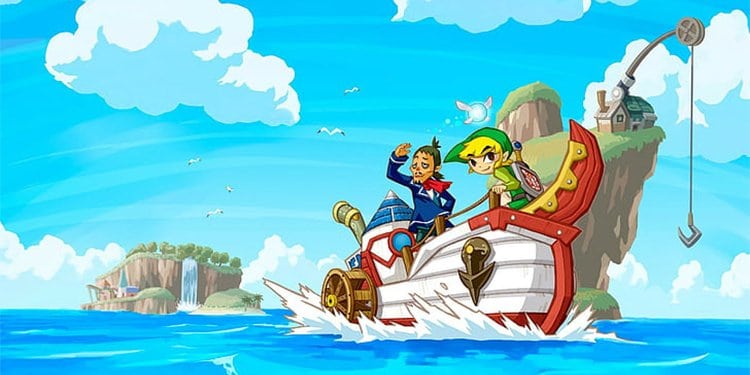
Phantom Hourglass debuted for Nintendo DS in 2007. Later on, it debuted for the Wii U Virtual Console.
The plot follows The Wind Waker. It’s about Link saving his friend, Tetra, from Bellum, another secondary antagonist. This story takes place in a flooded Hyrule, now part of the Great Sea. So, he needs the help of Captain Linebeck to travel across the world.
There’s also a unique gameplay feature: sailing. When sailing, players can see the map on the DS’ top screen. The player can lower the screen to make notes and return to important locations. Players sail by drawing the course on the sea chart.
Another key mechanic is the Temple of the Ocean King. This is the game’s central dungeon, and players must visit the place multiple times to get sea charts and unlock new areas until the end.
Lastly, the game has a 1v1 PvP arena multiplayer mode. One player controls Link, whereas the other controls three Phantom Guardians.
The Legend of Zelda: Spirit Tracks – 2009 (Handheld)
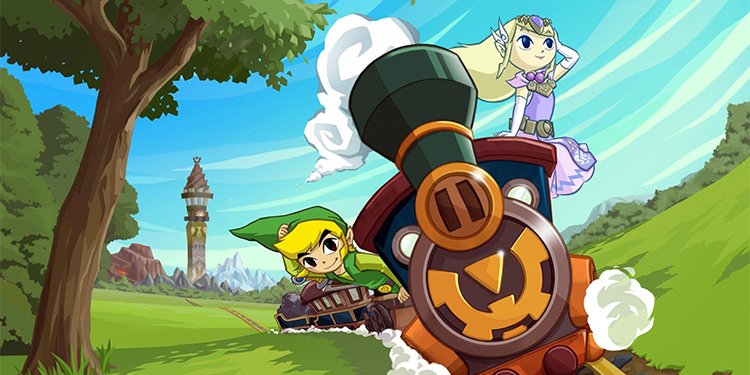
Spirit Tracks debuted for Nintendo DS in 2009. It’s also available on the Wii U Virtual Console. Like the game before, Spirit Tracks features 3D cel-shaded graphics. Story-wise, the plot happens after Phantom Hourglass, in the “Adult Timeline.”
The story happens in flooded Hyrule, known in the game as “New Hyrule.” Link’s new plot starts with his graduation ceremony as an Engineer, capable of driving the steam train. However, the tracks are fading, and both Link and Zelda must restore the Spirit Tracks, the Spirit Tower, and restore Zelda to her original body.
So, the game makes Link travel across the Overworld using a steam train. Zelda, as a spirit, helps you along the way. She can possess enemy suits of armor and Phantom warriors.
As the game goes on, the player discovers more areas. Like so, outside of the train, players control Link using the stylus pen. Similarly, the player directs possessed Phantoms to complete goals in puzzle-solving, exploration, and combat.
The Legend of Zelda: Ocarina of Time 3D – 2011 (Handheld – Remake)
Ocarina of Time 3D is a remake of the iconic Zelda game. It debuted for the Nintendo 3DS in 2011.
The game has mirrored versions of the Ocarina dungeons, updated graphics, added effects, and better performance. The upgrade received both critical and commercial success.
The Legend of Zelda: Skyward Sword – 2011 (Console)
Skyward Sword debuted for Nintendo Wii in 2011. Currently, it’s available on the Wii U Virtual console. There’s also a 2021 high-definition remaster for Nintendo Switch.
The newer game is at the beginning of the original timeline. Link navigates Skyloft, a floating island, as well as the land above. Gameplay focuses heavily on environmental storytelling, dungeon puzzles, and exploration.
Combat gameplay works through the Wii MotionPlus peripheral. With the controller, you use various sword abilities, block enemy attacks, and use multiple tools.
The story details the origins of the Master Sword. Because it’s the beginning of the Zelda continuity, it also explores the Triforce and the Gods of the fictional world. It opens up a plot where Link has to rescue Zelda, lost below the island’s clouded surface.
The Legend of Zelda: A Link Between Worlds – 2013 (Handheld)
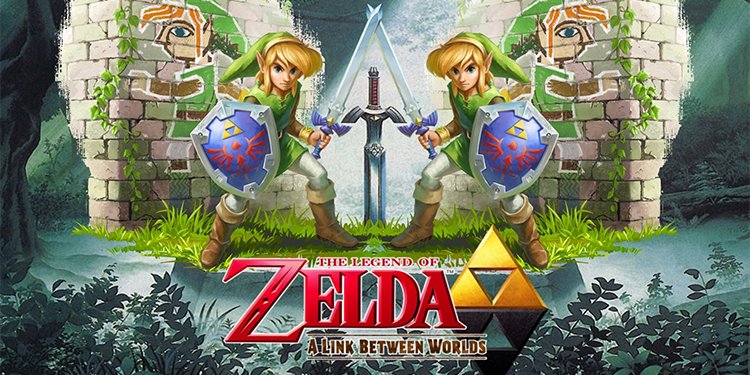
A Link Between Worlds debuted for Nintendo 3DS in 2013. It’s considered the spiritual successor of A Link to the Past. However, timeline-wise, the plot is between Oracle of Ages / Oracle of Seasons and Tri Force heroes.
A new Link version sets you to restore peace to Hyrule. She must defeat evil sorceress Yuga and rescue Princess Zelda from the parallel world of Lorule. Yuda aims to kidnap the Seven Sages and use their power to resurrect Ganon, the demon king.
The game’s unique ability allows Link to merge into walls like a 2D painting. It’s necessary to reach areas and travel between Lorule and Hyrule.
The Legend of Zelda: Majora’s Mask 3D – 2015 (Handheld – Remake)
Majora’s Mask 3D is a 2015 remake of the iconic Zelda title. Studio Grezzo created the title, and it debuted for Nintendo 3DS.
The remake overhauled the graphics. It features 3D graphics, new environmental textures, 30 fps, gyroscopic aiming, and a new touchscreen interface.
Other minor and major issues changed in-game events, quest mechanics, and skill controls.
The rest of the game says the same. The remake didn’t tweak anything regarding the plot, dungeons, and overall design.
The Legend of Zelda: Tri Force Heroes – 2015 (Handheld)
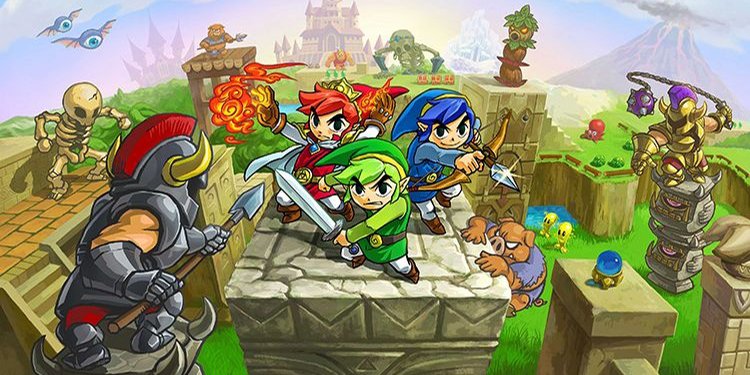
Tri Force Heroes debuted for Nintendo 3DS in 2015. Once again, Greezo took care of the title.
Tri Force Heroes features a co-op campaign, just like Four Swords Adventures and Four Swords. However, only three friends can play at the same time, and connectivity is wireless.
The plot follows the same Link we saw in A Link Between Worlds. This time around, he goes to the Hytopia kingdom to lift a curse from Princess Styla.
Gameplay-wise, each player can control a differently colored Link. They join forces to solve puzzles in a multi-layered dungeon across various levels. It supports local and multiplayer gameplay. It’s also available as a single-player, although it becomes significantly challenging.
The Legend of Zelda: Breath of the Wild: 2017 (Console)
Breath of the Wild perfects the mechanics, ideas, and design choices of the series. The title debuted for Nintendo Switch and Wii U in 2017, and it’s the latest main series installment.
Similarly, it is the last Zelda game, timeline-wise. It happens thousands of years after every other game, albeit it’s not clear if it belongs to any particular timeline or one of its own.
Link awakens from a hundred-year slumber, summoned to defeat Calamity Ganon and save Hyrule. This time around, though, the game comes with the widest open world in the series. There’s also a greater sense of freedom, illustrated by the lack of entrances and exits on most sites.
The map is full of secrets, details, environmental storytelling, puzzles, and adventures. Link can explore the world to its will, and the only limitation is the enemies inhabiting each area. Another limitation is your stamina bar, which determines Link’s capacity to swim, sprint, climb, glide, and Spin Attack.
In a way, it’s similar to the original Zelda title. There’re limited instructions, and players can enjoy the game freely. Tasks include collecting items, finding gear, aiding locals, solving puzzles, and completing side quests.
Gameplay-wise, there’s a light crafting system that allows Link to procure survival items. Crafting revolves around hunting animals, collecting wood, and collecting parts from enemies. In return, Link can cook food, repair gear, create makeshift snowboards, and more.
There’s also a vast array of tools and weapons to combat and explore. These elements give Link multiple ways to accomplish a single task or defeat enemies.
There’s also a weather system that determines the behavior of storms and similar events. For example, during a thunderstorm, metal objects attract lightning strikes.
Naturally, the world has no progression design. Instead, it encourages the player to experiment beyond the reach of any other game. It’s also non-linear and features a new physics engine and 3D cell-shaded graphics. Also, it has a chemistry engine that defines how each substance and texture interacts with another.
However, as the game evolves, Link unlocks several tools, weapons, and abilities. It creates a sense of character progression without visible statistics.
Breath of the Wild stands as one of the best games in history. Most open-world titles fill the world with chores (challenges, towers, bandit camps, collectibles, et). Yet, Breath of the Wild’s map is large for a reason. There’s attention to detail in every corner, something to discover after every adventure.
The Legend of Zelda: Link’s Awakening: 2019 (Console – Remake)
2019’s Link’s Awakening is a remake by Grezzo of the 1993 title. It debuted for the Nintendo Switch.
The game has a retro style, with modern graphics and performance. Character models are like toys, and maps are like dioramas.
Additionally, it has customizable dungeons, and players can complete their own or others’ creations for rewards.
Every Zelda Game in Chronological Order
- The Legend of Zelda – 1986
- Zelda II: The Adventure of Link – 1987
- The Legend of Zelda: A Link to the Past – 1991
- The Legend of Zelda: Link’s Awakening – 1993
- The Legend of Zelda: Ocarina of Time – 1998
- The Legend of Zelda: Majora’s Mask – 2000
- The Legend of Zelda: Oracle of Seasons & Oracle of Ages – 2001
- The Legend of Zelda: A Link to the Past & Four Swords – 2002
- The Legend of Zelda: The Wind Waker – 2002
- The Legend of Zelda: Four Swords Adventure – 2004
- The Legend of Zelda: The Minish Cap – 2004
- The Legend of Zelda: Twilight Princess – 2006
- The Legend of Zelda: Phantom Hourglass – 2007
- The Legend of Zelda: Spirit Tracks – 2009
- The Legend of Zelda: Ocarina of Time 3D – 2011 (Remake)
- The Legend of Zelda: Skyward Sword – 2011
- The Legend of Zelda: A Link Between Worlds – 2013
- The Legend of Zelda: Majora’s Mask 3D – 2015 (Remake)
- The Legend of Zelda: Tri Force Heroes – 2015
- The Legend of Zelda: Breath of the Wild: 2017
- The Legend of Zelda: Link’s Awakening – 2019 (Remake)
FAQs
Is The Legend of Zelda an RPG Series?
Moreover, the Legend of Zelda is both an RPG and an action-adventure title. Series creator Shigeru Miyamoto defined the saga as role-playing games.
Whereas Link doesn’t level up, he unlocks new tools, gadgets, weapons, and skills to grow as a character. However, because of the series linearity (lack of choices), we consider The Legend of Zelda as a JRPG / action-adventure hybrid.
Is the Zelda Series Open-world?
Series creators have said Breath of the Wild is how they always wanted the game to be. The first game already had an open-world design, and most Zelda games do.
However, particular Zelda games only offer linear multi-layered dungeons.
How Does the Zelda Fictional Chronology Work?
There’re three main timelines in The Legend of Zelda, according to Nintendo. Breath of the Wild doesn’t belong to either reality yet. However, we do know it happens many years after either game.
The Legend of Zelda has three separate timelines. The original reality is “The Legend of the Goddess and the Hero,” which ends at Ocarina of Time. Ocarina of Time’s ending opens up three branching paths, which are the alternate follow-up realities.
One of these paths happens if Ganondorf defeats Link (“The Hero is Defeated“). The other two paths happen if Link defeats Ganondorf (“The Hero is Triumphant“). The latter has a Child Era and an Adult Era.
In the Child Era, Link travels to the past to warn Zelda about the hero’s defeat. As a result, the events lead to Majora’s Mask, Twilight Princess, and Four Swords Adventures.
The Adult Era happens when Link goes back to the original timeline, after Ganondorf’s defeat. These events left the world without its hero and thus created a flooded Hyrule, which we see in Wind Waker, Phantom Hourglass, and Spirit Tracks.
You can check the timelines on this Behance post.
What’s the Wii / 3DS/ Wii U Virtual Console?
These are online stores available for either console. Nintendo tends to offer its oldest titles via these options.
How Many Remasters Are There in The Legend of Zelda Series?
There’re four remasters:
- Link’sAwakening DX (1998 – Game Boy Color)
- The Wind Waker HD (2013 – Wii U)
- Twilight Princess HD (2016 – Wii U)
- Skyward Sword HD (2021 – Nintendo Switch)
Is The Legend of Zelda Going Forward?
Yes. It seems Nintendo is about to create another masterpiece. They already announced an unnamed Breath of the Wild sequel, debuting in 2021.







Be the first to comment